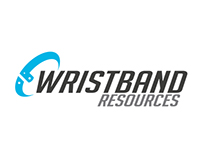Guide To Allergy Awareness from Wristbands Resources

This guest post from Wristband Resources came to us from Mary-Anne Kent, a Girl Scout Troop leader working very hard to assist her girls on earning their First Aid Badges. In Mary-Anne’s troop some of the girls have allergies, and used KidCheck’s information on allergy management to assist in the process.
As a thank you for providing helpful resources, the troop recommended to us Wristband Resource’s Guide to Allergy Awareness and thought that other people (and possibly other Girl Scout Troops) would find it as helpful as they did!
To Mary-Anne and her troop we say thank you for providing this insightful article and good luck on earning your First Aid badges.
______________________________________________________________________________________________________________________________
A number of allergies can be life-threatening for the people afflicted with these issues. For example, an allergy to latex is potentially life-threatening. However, often, a person will show no outward signs of having such an allergy. If exposure to the allergen occurs, an extreme allergic reaction can occur, possibly causing the person’s death. People with potentially life-threatening allergies can make their medical sensitivity known to those who might unknowingly expose them to the allergen in question by wearing medical bracelets or wristbands. A wristband alerts others that the person has a sensitivity that could make them ill.
Medical wristbands have a variety of uses. They can alert those who might need to know about a person’s heart condition or an illness such as diabetes. When allergies are life-threatening, wearing a visible identification bracelet makes the allergy known in an emergency situation. For example, if the person with the allergy is unconscious and cannot speak to first-responders in an emergency, the wristband will alert the medical professionals of the condition so they can respond correctly to intervene. First-responders are taught to always look on patients’ wrists or around their necks to see if a medical identification bracelet or necklace is present. The personal information contained on the bracelet will speak for the patient when the patient cannot communicate. Knowing information about an allergy can have a significant impact on how first-responders proceed in an emergency. For example, a person with a known allergy to bee stings will need fast intervention in the event of a bee sting, and medics will know not to use any supplies containing latex on someone with a latex allergy. An allergy bracelet can also be effective for helping to prevent a misdiagnosis in a medical situation.
Food allergies can be potentially serious for many people. The most common food allergies include eggs, nuts, dairy, wheat, fish, shellfish, and soy. People vary in their sensitivities to foods. Some people have mild reactions. However, other people have serious reactions that include difficulty breathing, swelling of the tongue and throat, a drop in blood pressure, abdominal cramps and vomiting, or even a loss of consciousness. An allergic reaction to a food can be sudden and severe, especially if it occurs outside of a hospital setting. The reaction could occur almost immediately, or it might take several hours to appear. Approximately 200 people die every year from a food allergy reaction.
A latex allergy can also range from mild to serious, depending on a person’s level of sensitivity and the amount of exposure to latex. In its mildest form, a latex sensitivity might manifest itself as skin irritation and itching after exposure. More serious symptoms include a scratchy throat, difficulty breathing, wheezing and coughing, and watery eyes. Potentially life-threatening symptoms include difficulty breathing, swelling in the mouth or throat, a drop in blood pressure, confusion, and loss of consciousness. By wearing a wristband, a person can ensure that no one touches their skin with latex, which could compromise their health.
Bracelets can be color-coded depending on the type of allergy a person has. In a hospital setting, many hospitals use special wristbands of specific colors to make patient conditions known to various staff members. For example, in a hospital, knowing about a patient’s allergy to latex is crucial. When hospital staff members see a medical bracelet of a certain color denoting a latex allergy, they will use alternative gloves and other medical equipment when caring for these patients to avoid an allergic reaction.
A number of options are available for medical allergy bracelets. While these wristbands can be simple in nature, they can also have additional features. For example, special clasps make it possible to add pieces to a bracelet if it’s necessary to add additional information about allergies. Special cuffs can expand and contract if a patient experiences swelling in the hands and wrists. Cuffs can be especially ideal for anyone with dexterity challenges that make it difficult to clasp and unclasp jewelry.
Learn more about life-threatening allergies and raising awareness of allergic conditions with wristbands by visiting these websites:
- Parents of Peanut Allergy Victim Warn of Seriousness
- Use of Identification Wristbands Among Patients Receiving Inpatient Treatment in a Teaching Hospital
- Color-Coded Patient Alert Wristband Standardization (PDF)
- Back-to-School Checklist for Parents Who Have a Child With a Life-Threatening Allergy (PDF)
- Food Allergies: Reducing the Risks (PDF)
- Latex Allergy Information
- Food Allergies (PDF)
- Latex Glove Allergies and the Food Industry (PDF)
- Approach to the Patient With Penicillin Allergy (PDF)


